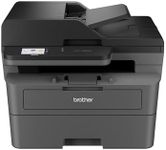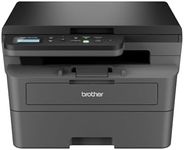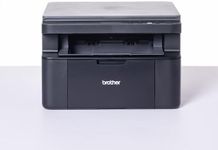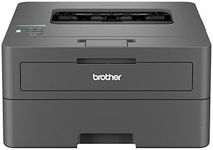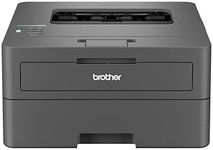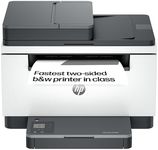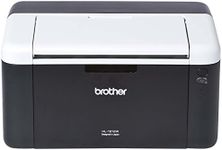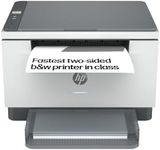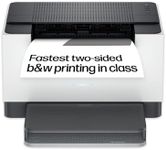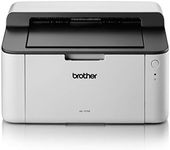Buying Guide for the Best Monochrome Laser Printers
Choosing the right monochrome laser printer involves understanding your specific needs and matching them with the printer's features. Monochrome laser printers are ideal for high-volume text printing, offering speed, efficiency, and cost-effectiveness. To make an informed decision, consider the following key specifications and how they align with your requirements.Print SpeedPrint speed, measured in pages per minute (PPM), indicates how quickly a printer can produce documents. This is important if you need to print large volumes of documents regularly. Printers with speeds of 20-30 PPM are suitable for home or small office use, while those with speeds above 40 PPM are better for larger offices with higher printing demands. Consider your typical print volume to determine the right speed for you.
Print QualityPrint quality is measured in dots per inch (DPI) and determines the clarity and detail of the printed text and images. Higher DPI values (1200 DPI and above) produce sharper and more detailed prints, which is important for professional documents. For general text printing, a DPI of 600 is usually sufficient. Assess the importance of print clarity in your documents to choose the appropriate DPI.
Duty CycleThe duty cycle is the maximum number of pages a printer can handle per month without experiencing wear and tear. This is crucial for ensuring the printer's longevity and reliability. For home use or small offices, a duty cycle of up to 10,000 pages per month is typically adequate. Larger offices with higher print volumes should look for printers with a duty cycle of 20,000 pages or more. Estimate your monthly print volume to select a printer with a suitable duty cycle.
Connectivity OptionsConnectivity options determine how you can connect to the printer. Common options include USB, Ethernet, and Wi-Fi. USB connections are straightforward for single-user setups, while Ethernet is ideal for wired network environments. Wi-Fi connectivity allows for wireless printing from multiple devices, which is convenient for shared office spaces. Consider your workspace setup and how you prefer to connect to the printer when choosing the right connectivity options.
Paper HandlingPaper handling refers to the printer's capacity to manage different paper sizes and types, as well as its input and output tray capacities. This is important for ensuring smooth operation and reducing the need for frequent paper refills. Printers with larger input trays (250 sheets or more) are suitable for high-volume printing environments. If you need to print on various paper sizes or types, look for printers with adjustable trays and multi-purpose feeders. Think about your typical print jobs and paper usage to determine the best paper handling features for you.
Operating CostsOperating costs include the price of toner cartridges and the printer's energy consumption. This is important for budgeting and long-term cost management. Toner cartridges with higher yields (more pages per cartridge) are generally more cost-effective for high-volume printing. Energy-efficient printers can also help reduce electricity bills. Consider the cost of replacement cartridges and the printer's energy efficiency rating to manage ongoing expenses effectively.
Size and DesignThe size and design of the printer can affect its placement and usability in your workspace. Compact printers are ideal for small desks or home offices, while larger models may offer more features but require more space. Consider the available space in your office and how the printer's design will fit into your work environment. Choose a printer that balances functionality with the space you have.
